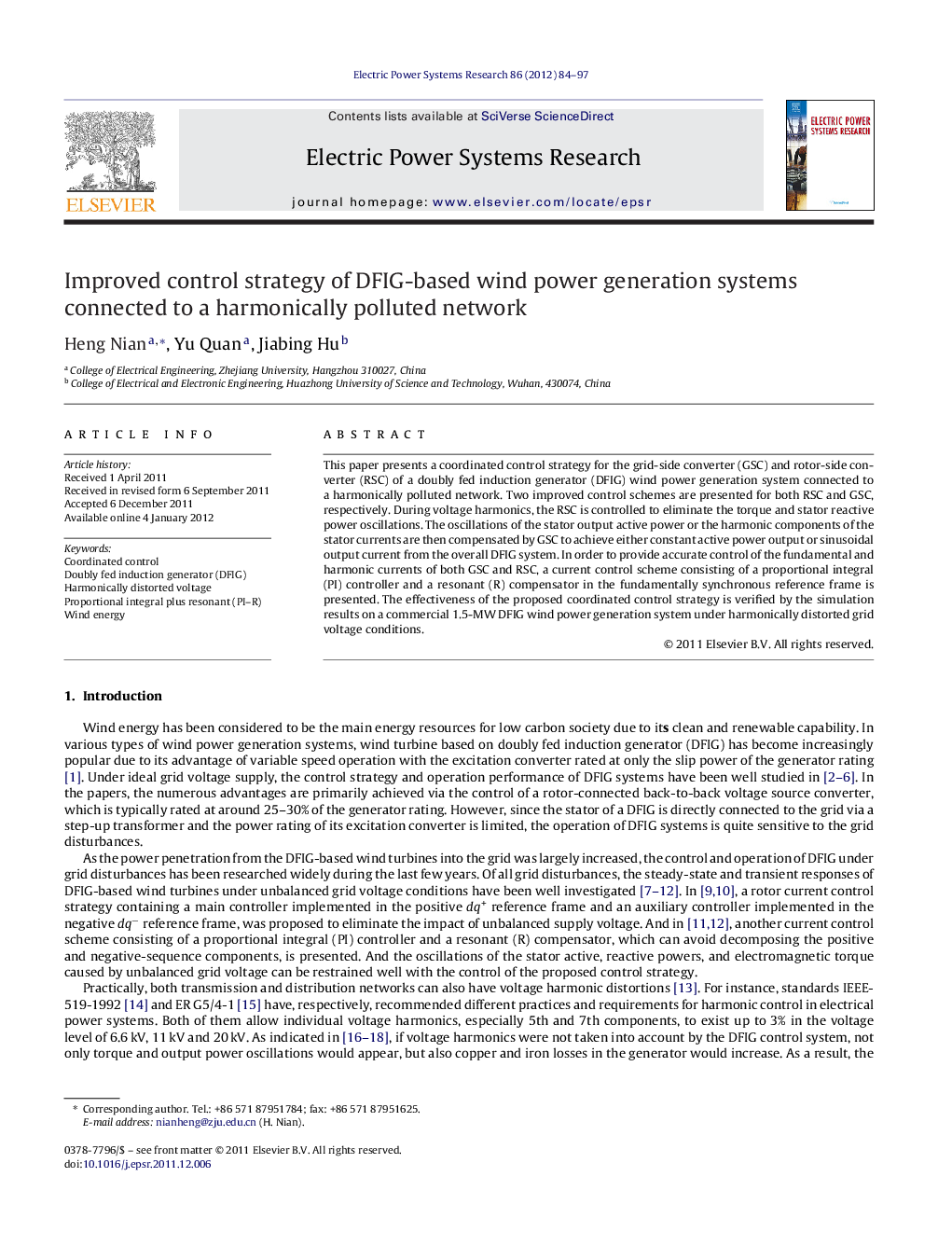| Article ID | Journal | Published Year | Pages | File Type |
|---|---|---|---|---|
| 703953 | Electric Power Systems Research | 2012 | 14 Pages |
This paper presents a coordinated control strategy for the grid-side converter (GSC) and rotor-side converter (RSC) of a doubly fed induction generator (DFIG) wind power generation system connected to a harmonically polluted network. Two improved control schemes are presented for both RSC and GSC, respectively. During voltage harmonics, the RSC is controlled to eliminate the torque and stator reactive power oscillations. The oscillations of the stator output active power or the harmonic components of the stator currents are then compensated by GSC to achieve either constant active power output or sinusoidal output current from the overall DFIG system. In order to provide accurate control of the fundamental and harmonic currents of both GSC and RSC, a current control scheme consisting of a proportional integral (PI) controller and a resonant (R) compensator in the fundamentally synchronous reference frame is presented. The effectiveness of the proposed coordinated control strategy is verified by the simulation results on a commercial 1.5-MW DFIG wind power generation system under harmonically distorted grid voltage conditions.
► Grid-side converter and rotor-side converter for DFIG system were modeled under the harmonically polluted grid network. ► Coordinate control strategy for grid-side converter and rotor-side converter was investigated to achieve two control targets for the DFIG system: (1) sinusoidal system output current and constant electromagnetic torque; (2) steady output power of DFIG system and constant electromagnetic torque. ► PI regulator and a harmonic resonant compensator were used for the current regulator. ► Proposed control scheme is verified by simulation study under distorted grid voltage conditions.
